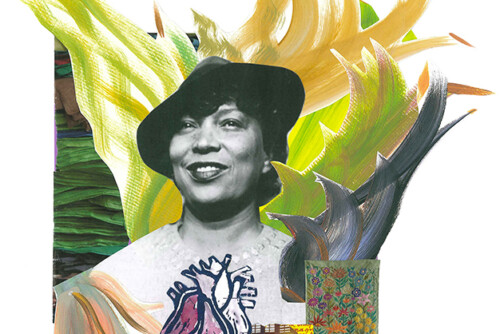In one of those surprising coincidences that seem to carry meaning beyond a simple accident of timing, the French press announced last spring, just a few days apart, the death of choreographer Katherine Dunham and events to honor the 100th anniversary of the birth of Josephine Baker. Born in 1912, Katherine Dunham was six years younger than Baker. She studied ballet with the Russian dancer Ludmila Speranzeva, and by 1930 she had created her own dance company, the Ballet Nègre. She made her professional début in 1933 in Ruth Page’s “La Guiablesse,” a work based on Antillean folk themes. She took courses in anthropology at the University of Chicago and in 1935 and 1936 went to the Caribbean on a Julius Rosenwald fellowship to study regional dance forms on most of the islands. In 1937 she staged “L’Ag’Ya,” a Martinican fighting dance in a fishing village, for the Federal Theater Project in Chicago, and was chosen as the artistic director of the Negro Unit. She also appeared there with the Duke Ellington orchestra at the Sherman Hotel. It was in Chicago that she created her first ensemble choreographies. She premiered cabaret-style dances on African American themes, such as “Barrelhouse Blues” and “Cakewalk,” as well as ethnic dances such as “Rara Tonga.” In 1939, Warner Brothers produced Carnival of Rhythm, a short film dedicated to her work in which she introduced Brazilian dance themes and the famous “Batucada.”
In February 1940, Dunham choreographed “Tropics and Le Jazz Hot: From Haiti to Harlem” for performances in New York. That same year she collaborated with George Balanchine to create the dances for the Broadway musical Cabin in the Sky. In Hollywood she met the painter John Pratt, who became her husband and the designer of most of her productions. In 1943, she presented Tropical Revue on Broadway, which included her major successes, a suite called “Plantation Dances” and a long work called “Rites of Passage.” This last piece was daringly sexual in its theme, especially in its representation of fertility rites, and was banned in Boston. Dunham also had a gift for picking original folk dances that she then imbued with a tremendous theatrical vitality. Within the space of a few years, she produced the Broadway musical Carib Song (1945), which included the number “Shango,” with its strong intimations of voodoo; and a revue, Bal Nègre, in which she intended to take dance “out of the burlesque to make it a more dignified art.” 1 At that point the “Dunham School” was presenting the most striking elements of black dance.
- Edward Thorpe, Black Dance. Woodstock, NY: Overlook Press, 1991, 24-30.[↑]



